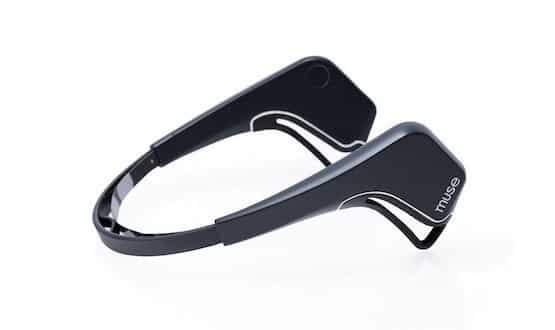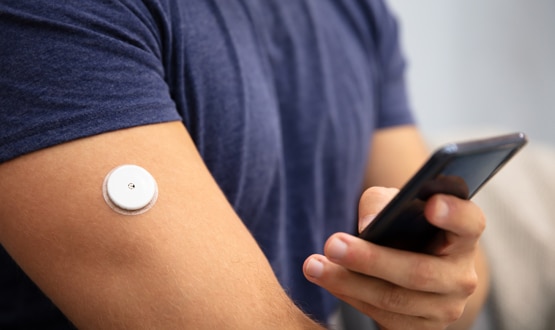A sector to Watch

With the formal launch of the Apple Watch at the beginning of this week, wearable technology has been back in the news.
Apple’s price point – $350 for an entry-level Sport model, to $17,000 for a top-tier, 18 carat gold edition – might have raised eyebrows. But the Watch, which will be on sale in the UK on 24 April, still triggered a wave of articles and debates about its impact on the health and tech communities.
Alongside the already announced HealthKit, Apple announced a ResearchKit, which allows researchers to collect medical data directly from patients using an Apple device.
In a typically hyperbolic statement on its website, the company describes this as “an open source software framework that makes it easy for researchers and developers to create apps that could revolutionise medical studies, potentially transforming medicine forever.”
Brain waves!
Wearables have been around a lot longer than the Apple Watch though, as demonstrated by the vast amount of products on display at the Wearable Technology Show in London this week.
Developers at the show demonstrated a similar confidence that this technology has great potential in healthcare; even if there is little evidence to date of devices having a significant impact on health outcomes.
Freescale’s Steve Wainwright gave a keynote presentation in which he argued that although smart watches are likely to be the biggest wearable market financially, it is healthcare devices that are predicted to be the biggest segment by volume – at 121 million units per year.
“For sure wearables are here. It is a real market and we can see it dramatically developing,” said Wainwright, who heads sales and marketing across the EMEA region for Freescale, a company that produces embedded hardware and software for several industries.
Among the technologies to capture the audience’s interest was the Muse brain sensing headband, which made its UK launch on 10 March.
Ariel Garten, chief executive of Interaxon, the company behind Muse, said the headband was a clinical grade EEG that could link to a smartphone or tablet. The brain data can then be interpreted by programmes into tasks to improve “brain fitness” through techniques involving motivation, responding to stress and improving wellness.
Other devices to stand out as having potential healthcare benefits included Nuvo Group’s Ritmo PregSense, a belt that can monitor data during pregnancy and help detect symptoms that may lead to complications, and the Shimmer wearable sensor, which can be connected to other devices to remotely monitor a patient’s rehab progress or to assess a person’s mobility and risk of falling.
A long road from hype to mainstream acceptance
Despite the excitement around what individuals are able to do with wearables, there was widespread acknowledgement that it will be a number of years before they can make a real impact on mainstream healthcare.
Deepak Prakash, global marketing director for Vancive Medical Technologies gave a presentation on the future health economy, and argued: “There’s way too much hype being placed on this space to rapidly transform healthcare overnight.”
The direction of travel does favour those in the wearables field, however, said Prakash who referenced PriceWaterhouseCoopers’ ‘new health economy’ of data savvy and information hungry consumers.
To successfully build on this momentum several challenges need to be overcome, including the need to build trust among patients and healthcare professionals that these tools can obtain accurate data and can play a part in a healthcare regimen.
For Prakash accurate outcomes are key in getting healthcare professionals on board: “If you don’t have clinical measures or health economics you are not going to get interest anywhere.
“It’s going to be one shiny object after another with no relevance to the clinical space. So you have to understand the clinical measures of health economics.”
Joss Langford of Activinsights, developer of the GENEActiv wrist-worn accelerometer, was more inclined to see consumer barriers to take up, and argued that education was needed for patients and professionals.
“We need to make sure that patients trust both the medical practitioner and the objective measurement of the device that they use. That’s the first step. And from there to be able to explain to the healthcare professional how the data gained is abnormal or normal for that individual.”
Another route to saving bed days
Even if patients and doctors trust the data, there’s the issue of who is going to pay for the devices, and the analysis of the data they are generating. And if a wearable becomes a certified medical device and is used as a healthcare intervention – will it reimbursed by healthcare systems?
Dr Sahfi Ahmed, a consultation surgeon at Barts Health NHS Trust in London and director at Virtual Medics, argued that value will become a key issue, but suggested that there could be longer-term savings by freeing up hospital beds.
“All you do is have a device for the community so that a GP can pick up data from a platform, call to provide advice and prevent an admission that’s unnecessary. The bigger picture is that this will save money.”
At the moment though, this situation seems some way off, with the consumer focus and high price of wearables keeping them in the hands of the people who may need them the least, rather than older and poorer populations where monitoring a daily lifestyle may have more benefit.
Privacy still a key issue
Another key issue that is unlikely to go away anytime soon is that of privacy. A large focus of Apple’s presentation was on how users of its products will be the ones to decide how to share their data, but what are the wider plans for data protection and how can companies convince the public that these are robust?
Andreas Caduff, chief executive of Biovotion, a medical device company behind the VSM monitor to record daily data for people with chronic conditions, welcomed Apple’s progress in the field as something that would build confidence in the industry as a whole.
“If data science derives the value that we believe it holds, then this data becomes very powerful, personalised and intimidating in one way or the other,” said Caduff.
“So this data has to be protected – this security will be an important part of developing the field. We hope we can provide a very safe type of data protection in order to have confidence.”
For Nathan Intrator, the chief technology officer of Nuvo-Group, people will accept some intrusion of privacy if the product is good enough, such as with Google mail.
“I think people trade-off between privacy and comfort. I suspect in the medical field that is going to happen because measuring continuously at home and giving up privacy for some people is a better alternative to going to a clinic.”
Regardless of the general public though, regulations do need to be developed not just for the use of wearable data in healthcare, but for the industry as a whole.
During his keynote speech Freescale’s Wainwright described security as the number one issue that delegates needed to be concerned about.
“Security is mandatory. When we look at people starting out business in wearables, innovation is at the fore. Security does not tend to be the first thing people want to concentrate on. It needs to be much further up in the agenda of things that are looked at
“Wearables will be convenient, desirable and will collect masses of data to make big data decision making better. But for sure somebody somewhere will want to do something nasty with that information. So we have to find a way to close this gap.”



